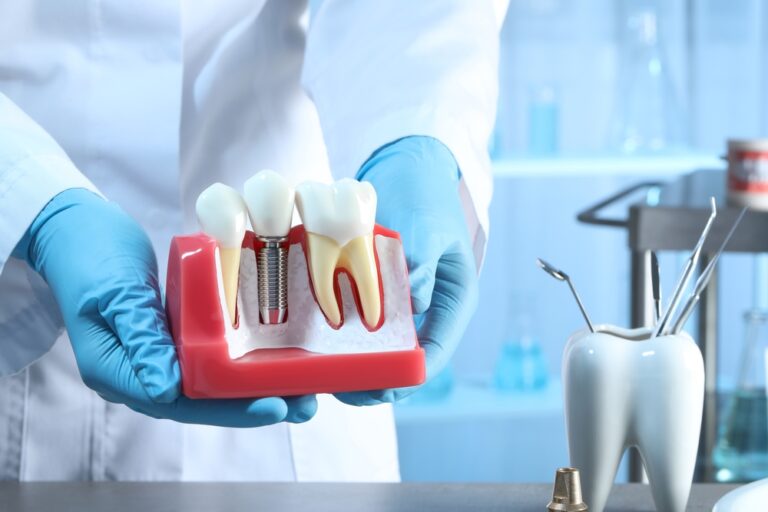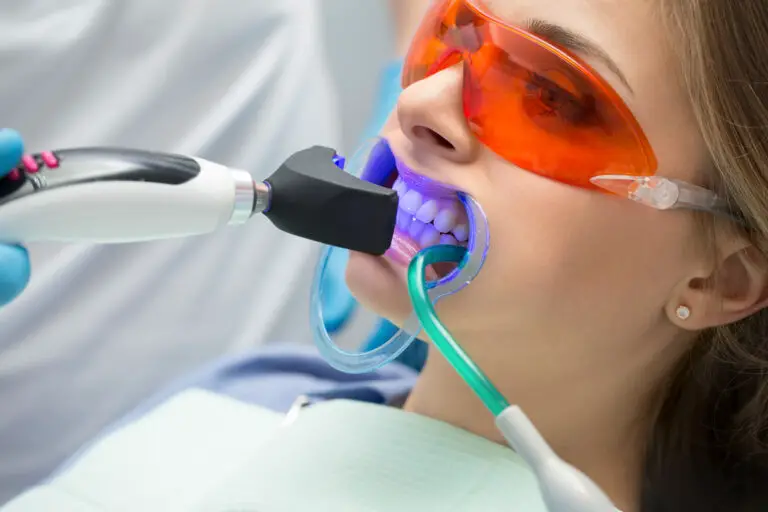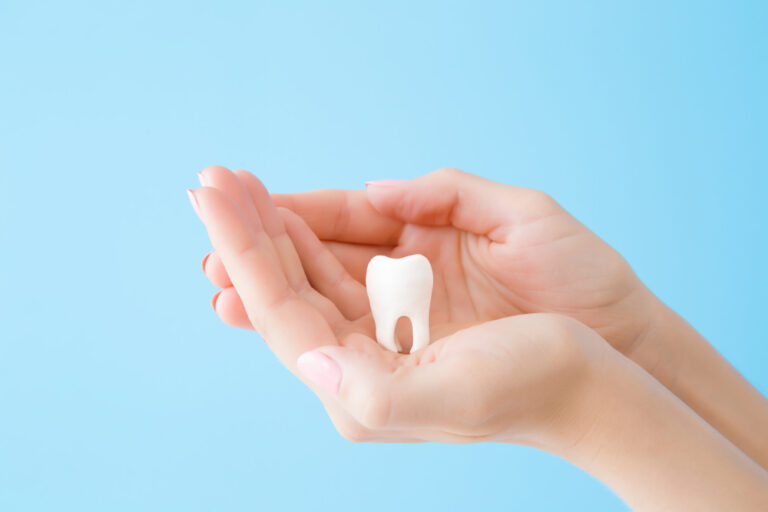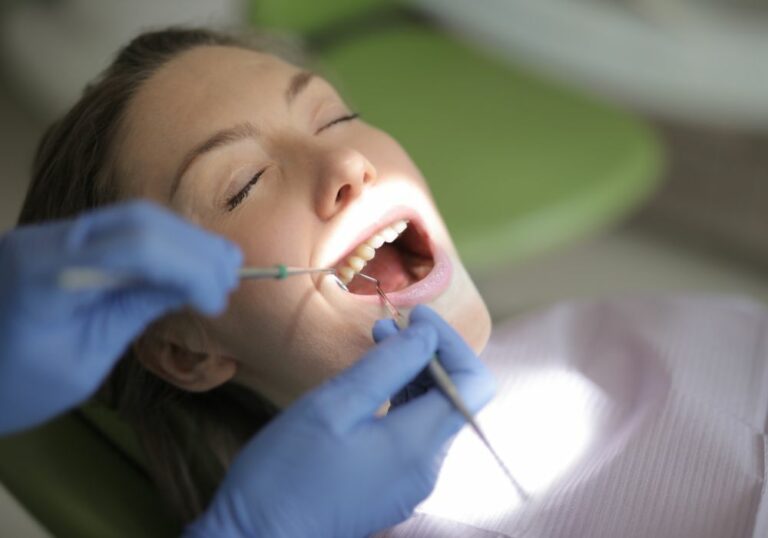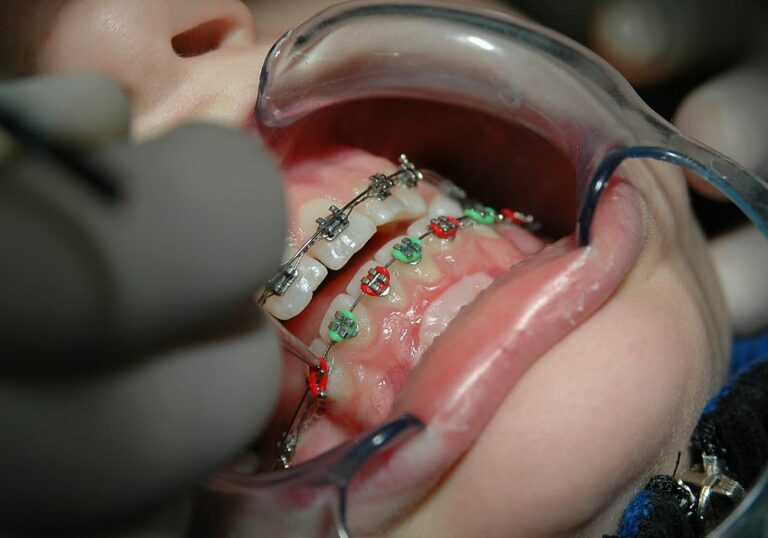Are you wondering what you can eat after getting a tooth pulled? It’s important to take care of yourself and follow your dentist’s advice to promote healing and avoid complications. Your diet plays a crucial role in your recovery, and certain foods can help you heal faster while others can hinder the process.
After a tooth extraction, your mouth will be tender and sore, and you may experience some bleeding and swelling. It’s best to stick to soft foods that are easy to chew and won’t irritate the extraction site. Broths, smoothies, and pureed soups are great options to start with, as they provide essential nutrients without requiring much effort to eat. As you start to feel better, you can gradually introduce more solid foods into your diet, but it’s important to avoid hard, crunchy, and sticky foods that can damage the blood clot and delay healing.
In this article, we’ll guide you through what you can and can’t eat after getting a tooth pulled. We’ll provide you with a list of soft and nutritious foods that can help you recover faster and avoid complications. We’ll also share some tips on how to prepare and consume your meals to minimize discomfort and promote healing. So, let’s get started!
Understanding Tooth Extraction
Getting a tooth pulled is a common dental procedure that involves removing a tooth from its socket in the jawbone. Tooth extraction may be necessary for several reasons, including severe decay, infection, or overcrowding.
Before the procedure, your dentist will numb the area around the tooth with a local anesthetic to minimize pain. In some cases, sedation may be used to help you relax during the procedure.
During the procedure, your dentist will loosen the tooth from its socket using a special tool called an elevator. Once the tooth is loose, your dentist will use forceps to remove it from the socket. After the tooth is removed, your dentist will pack the socket with gauze to stop the bleeding.
After the procedure, it is crucial to follow your dentist’s instructions for aftercare to ensure proper healing. This includes taking any prescribed pain medication and avoiding certain foods that can irritate the extraction site.
In the next section, we will discuss the types of foods you can eat after getting a tooth pulled to promote healing and prevent complications.
Immediate Aftercare

Immediately after getting a tooth pulled, it’s important to take proper care of the extraction site to promote healing and prevent complications. Here are some tips for immediate aftercare:
Bite on Gauze
Your dentist or oral surgeon will place a piece of gauze over the extraction site and ask you to bite down on it firmly for about 30-45 minutes. This helps to stop the bleeding and form a blood clot, which is necessary for proper healing. Make sure to follow your dentist’s instructions carefully.
Apply Ice
Swelling is common after a tooth extraction, and applying ice can help to reduce it. Use an ice pack or a bag of frozen vegetables wrapped in a towel and apply it to your cheek for 10-20 minutes at a time, with 10-minute breaks in between. Repeat this for the first 24-48 hours after the procedure.
Rest and Avoid Physical Activity
Resting is important after a tooth extraction, as physical activity can increase blood flow and cause bleeding. Avoid any strenuous activity for the first 24 hours after the procedure. After that, you can gradually resume your normal activities, but avoid anything too strenuous for at least a week.
Avoid Smoking and Drinking Alcohol
Smoking and drinking alcohol can interfere with the healing process and increase the risk of complications. Avoid smoking for at least 24 hours after the procedure, and try to quit altogether if possible. Avoid alcohol for at least 48 hours after the procedure.
Eat Soft Foods
For the first few days after the procedure, stick to soft foods that are easy to chew and swallow. Avoid hot, spicy, or acidic foods that can irritate the extraction site. Some good options include:
- Soups
- Yogurt
- Smoothies
- Scrambled eggs
- Mashed potatoes
- Applesauce
Make sure to drink plenty of fluids, but avoid using a straw, as the suction can dislodge the blood clot and delay healing.
Foods to Eat After Tooth Extraction
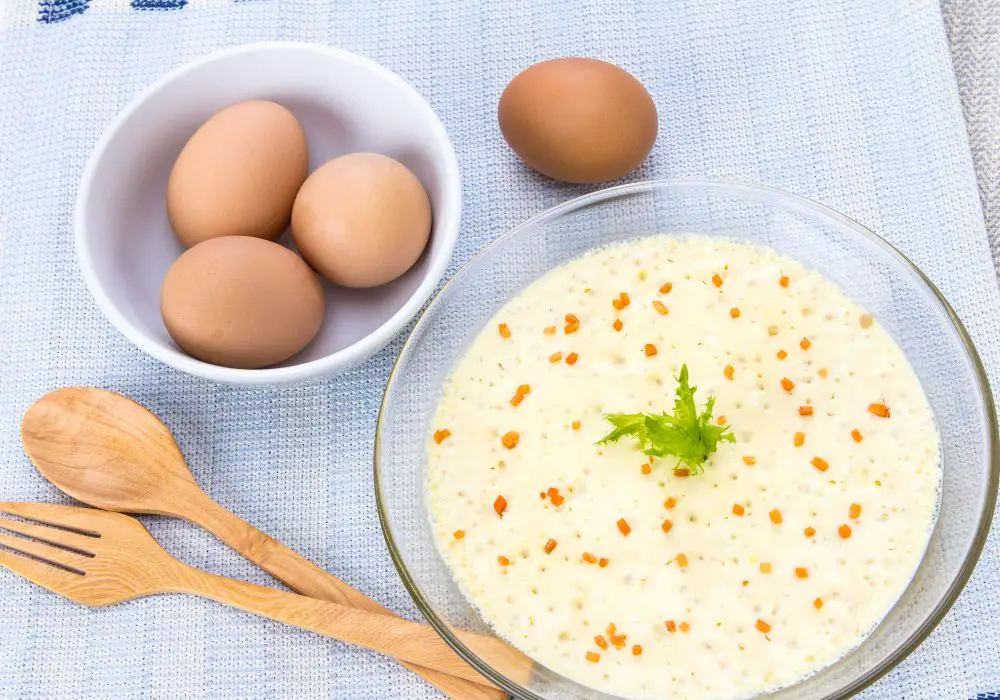
After getting a tooth pulled, it is important to be mindful of what you eat to ensure proper healing and avoid any complications. Here are some soft foods, hydrating liquids, and protein-rich foods that you can enjoy after a tooth extraction.
Soft Foods
Soft foods are a great option after a tooth extraction as they are easy to eat and won’t irritate the extraction site. Here are some soft foods to consider:
- Mashed potatoes
- Scrambled eggs
- Smoothies
- Applesauce
- Avocado
- Yogurt
- Pudding
- Oatmeal
Make sure to avoid any foods that are too hot, spicy, or crunchy as they can cause discomfort and even damage the extraction site.
Hydrating Liquids
Staying hydrated is important after a tooth extraction as it helps with the healing process and prevents dry mouth. Here are some hydrating liquids to consider:
- Water
- Coconut water
- Fruit juice (diluted with water)
- Broth
- Herbal tea (non-caffeinated)
Avoid drinking through a straw as the suction can dislodge the blood clot and delay healing.
Protein Rich Foods
Protein is important for healing and rebuilding tissues after a tooth extraction. Here are some protein-rich foods to consider:
- Scrambled eggs
- Smoothies with protein powder
- Cottage cheese
- Soft cooked fish
- Lentil soup
- Hummus
Make sure to avoid any tough meats or hard-to-chew foods as they can cause discomfort and delay healing.
Remember to always follow your dentist’s instructions and avoid any foods that they advise against. With proper care and a soft food diet, you can ensure a smooth and speedy recovery after a tooth extraction.
Foods to Avoid After Tooth Extraction
After getting a tooth pulled, it’s important to avoid certain foods to ensure proper healing and prevent any complications. Here are some foods to avoid:
Hard Foods
Avoid hard foods that require a lot of chewing, as they can cause pain and damage to the extraction site. Some examples of hard foods to avoid include:
- Nuts
- Chips
- Popcorn
- Hard candy
- Raw vegetables
Hot and Spicy Foods
Hot and spicy foods can irritate the extraction site and cause pain and discomfort. It’s best to avoid these foods until the extraction site has fully healed. Some examples of hot and spicy foods to avoid include:
- Hot sauce
- Spicy curries
- Chili peppers
- Salsa
- Wasabi
Alcoholic Beverages
Alcoholic beverages can interfere with the healing process and cause bleeding at the extraction site. It’s best to avoid alcoholic beverages for at least 24 hours after the extraction. Some examples of alcoholic beverages to avoid include:
- Beer
- Wine
- Spirits
- Cocktails
In general, it’s best to stick to a soft and liquid diet for the first few days after the extraction. This will help prevent any damage to the extraction site and promote proper healing. Be sure to follow your dentist’s instructions for post-extraction care to ensure a smooth and speedy recovery.
Diet Plan for Recovery

After getting a tooth pulled, it is important to follow a proper diet plan to promote healing and prevent any complications. Here is a diet plan for recovery that you can follow:
Day 1-2
During the first 24 to 48 hours after getting a tooth pulled, you should only consume liquids or soft foods. Avoid anything that requires a lot of chewing or could get stuck in the extraction site. Here are some foods to consider:
- Broth-based soups
- Smoothies
- Milkshakes
- Pureed vegetables
- Mashed potatoes
- Applesauce
Make sure to avoid hot foods and drinks, as the heat can cause more pain and interfere with the healing process.
Day 3-7
After the first two days, you can start to introduce more solid foods into your diet. However, make sure to still avoid any hard, crunchy, or acidic foods that could irritate the extraction site. Here are some foods to consider:
- Scrambled eggs
- Oatmeal
- Soft fruits like bananas or avocados
- Cooked vegetables like carrots or squash
- Yogurt
- Cottage cheese
Make sure to chew on the opposite side of the extraction site and rinse your mouth with salt water after each meal to help keep the area clean.
Week 2 Onwards
After the first week, you can start to reintroduce more solid foods into your diet. However, make sure to still avoid anything that could irritate the extraction site. Here are some foods to consider:
- Soft meats like fish or ground beef
- Cooked grains like rice or quinoa
- Soft bread or toast
- Cooked vegetables like broccoli or cauliflower
- Cheese
- Nut butters
Make sure to continue to chew on the opposite side of the extraction site and rinse your mouth with salt water after each meal. It is also important to avoid alcohol and tobacco products during the entire recovery process.
Importance of Good Nutrition
After having a tooth pulled, it is important to take care of yourself and ensure that you are getting the right nutrition to help your body heal. Good nutrition is essential for a speedy recovery and can help to reduce the risk of complications.
Here are some reasons why good nutrition is important after a tooth extraction:
1. Helps with Healing
Eating a balanced diet that is rich in vitamins and minerals can help to promote healing and reduce inflammation. Foods that are high in protein, such as eggs, fish, and chicken, can also help to repair and rebuild tissues.
2. Reduces the Risk of Infection
Eating a healthy, balanced diet can help to boost your immune system and reduce your risk of infection. Avoiding sugary and processed foods can also help to prevent infection and promote healing.
3. Prevents Dry Socket
Dry socket is a painful condition that can occur after a tooth extraction. It happens when the blood clot that forms in the socket is dislodged, exposing the bone and nerves. Eating soft, easy-to-chew foods can help to prevent dry socket and promote healing.
4. Provides Energy
Eating a balanced diet that is rich in carbohydrates can help to provide you with the energy you need to recover from your tooth extraction. Foods such as pasta, rice, and bread can help to keep you energized and feeling full.
5. Improves Mood
Eating a healthy, balanced diet can also help to improve your mood and reduce stress. Foods that are rich in omega-3 fatty acids, such as salmon and walnuts, can help to boost your mood and reduce inflammation.
In conclusion, good nutrition is essential for a speedy recovery after a tooth extraction. Eating a balanced diet that is rich in vitamins, minerals, and protein can help to promote healing, reduce the risk of infection, prevent dry socket, provide energy, and improve your mood.
Potential Complications

After a tooth extraction, it is important to pay attention to your diet to promote healing and reduce the risk of complications. Here are some potential complications that you should be aware of:
Dry Socket
Dry socket is a common complication that occurs when the blood clot that forms in the tooth socket after extraction becomes dislodged or dissolves before the wound has healed. This can lead to intense pain and discomfort, bad breath, and an unpleasant taste in your mouth. To prevent dry socket, avoid smoking and drinking through a straw, and follow your dentist’s instructions for aftercare.
Infection
Infection is another potential complication of tooth extraction. Signs of infection include fever, swelling, redness, and pus or discharge from the extraction site. To prevent infection, make sure to keep the extraction site clean and follow your dentist’s instructions for aftercare.
Nerve Damage
Nerve damage is a rare but serious complication of tooth extraction. Symptoms of nerve damage include numbness, tingling, or loss of sensation in the tongue, lips, or chin. If you experience any of these symptoms, contact your dentist immediately.
Bleeding
Bleeding is common after tooth extraction, but excessive bleeding can be a sign of a more serious complication. If bleeding persists for more than 24 hours, contact your dentist.
By following your dentist’s instructions for aftercare and paying attention to your diet, you can reduce the risk of complications and promote a smooth and speedy recovery after tooth extraction.
Frequently Asked Questions
How soon can I eat ice cream after tooth extraction?
It is recommended to avoid ice cream for at least the first 24 hours after tooth extraction. After that, you can gradually introduce soft, cold foods like ice cream into your diet. However, be sure to avoid any flavors with nuts, candy pieces, or other hard ingredients that can irritate the extraction site.
What to eat after tooth extraction NHS?
The NHS recommends eating soft, cool foods like yogurt, mashed potatoes, and smoothies for the first few days after tooth extraction. It is important to avoid hot, spicy, or acidic foods that can cause pain or irritation. You should also avoid drinking through a straw, as the suction can dislodge the blood clot and delay healing.
What can I eat 3 days after tooth extraction?
After 3 days, you can start to introduce slightly firmer foods like scrambled eggs, pasta, and cooked vegetables into your diet. However, it is still important to avoid any hard, crunchy, or chewy foods that can disrupt the healing process. Be sure to continue to chew on the opposite side of your mouth to avoid putting pressure on the extraction site.
When can I eat solid food after tooth extraction with stitches?
If you have stitches, it is important to wait until they have dissolved or been removed before eating solid foods. This usually takes about 7-10 days. In the meantime, stick to soft, cool foods like smoothies, mashed potatoes, and scrambled eggs.
How soon can I eat after tooth extraction?
It is recommended to wait at least 24 hours before eating after tooth extraction. During this time, stick to soft, cool foods like smoothies, yogurt, and mashed potatoes. After the first day, you can gradually introduce slightly firmer foods like pasta and cooked vegetables.
Can I eat noodles after tooth extraction?
Soft, cooked noodles can be a good option after tooth extraction, as long as they are not too hot or spicy. Be sure to avoid any hard, crunchy, or chewy ingredients that can irritate the extraction site. It is also important to continue to chew on the opposite side of your mouth to avoid putting pressure on the extraction site.

